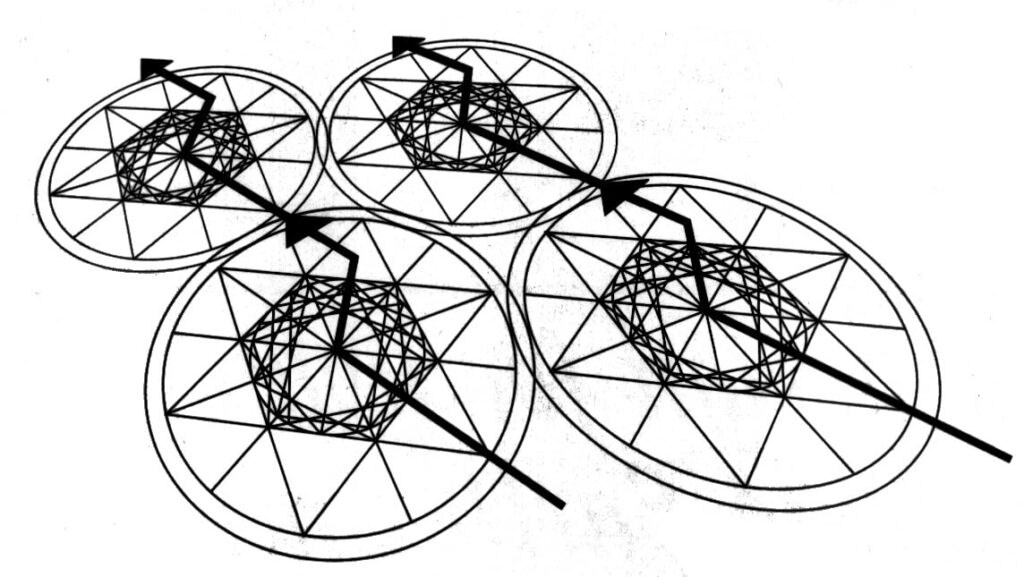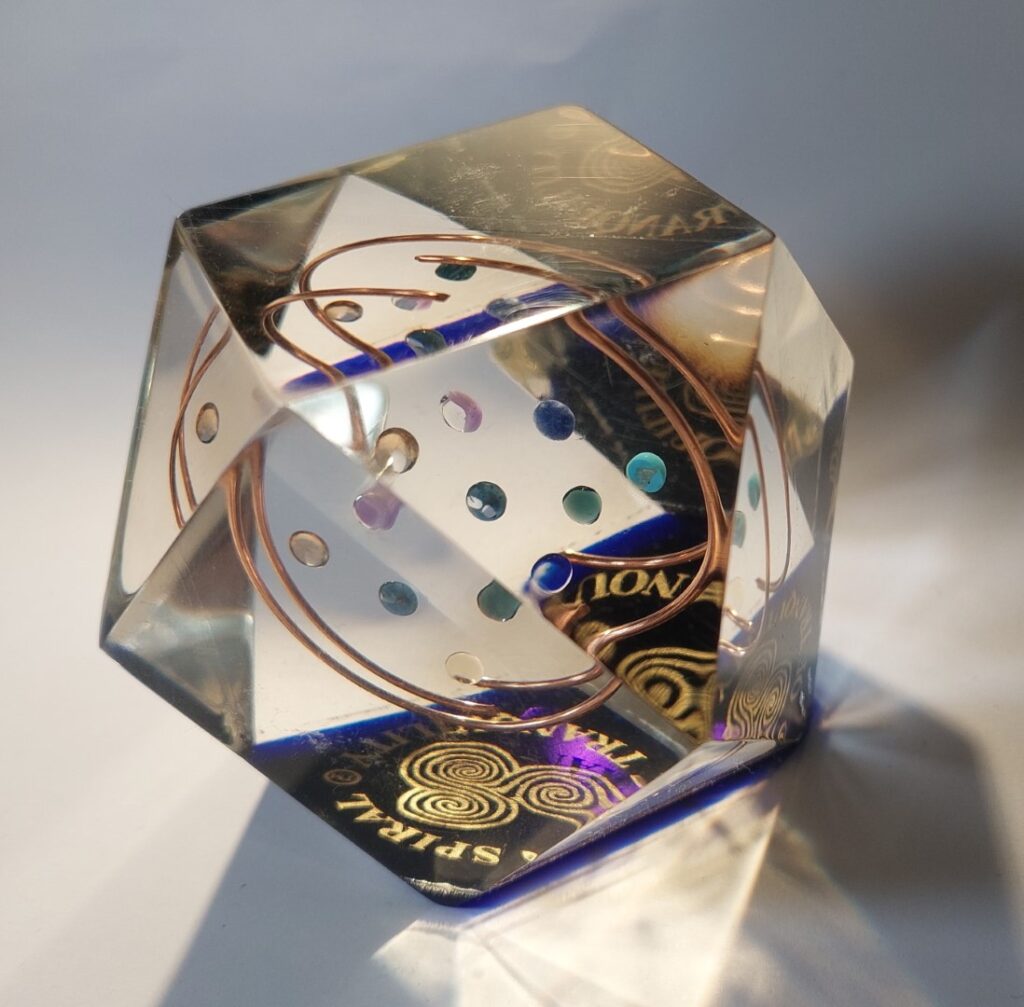Originally published in the March 2022 edition of Dowsing Today, the journal of the British Society of Dowsers.
The Duchess
Few people who watched the 3-part BBC period drama ‘A Very British Scandal’ featuring Margaret, Duchess of Argyll (Claire Foy) and the duke, Ian Campbell (Paul Bettany), aired over the Christmas 2021 holiday period, will be aware of the connection with the world of dowsing.
Margaret’s father was George Hay Whigham, chairman of the Celanese Corporation of Britain and North America, whose multi-billion-dollar fortune allowed him to ruthlessly promote the social rise of his beloved daughter and largely paid for the restoration of Inveraray Castle. With his second marriage in 1956 to the much younger Vera Jane Siddons Corby, Margaret suddenly found herself in the unusual position of having a stepmother who was a year younger than herself. Much jealousy and intrigue ensued between the two, when in 1963 the acrimonious divorce of the 11th Duke of Argyll from his wife became headline news, with the infamous photograph of a headless man and a naked Margaret, identified by her signature pearl necklace, produced in court.
Born in Aberdeen, Jane was the eldest daughter of John Siddons Corby, inventor of the eponymous trouser press. During the second world war she marketed her father’s invention in the United States before returning to the UK in 1948 on the liner Queen Elizabeth. It was during a meal at the captain’s table that she was introduced to George, who was 34 years her senior. As he was still married to Helen Hannay at the time, the couple kept their relationship discreet until after his wife’s death in 1955. They married at Hallowe’en the following year and Margaret initially seemed to get on well with her new stepmother. However, Jane’s relationship with George soured after she was called to give evidence against the duchess in the High Court concerning the legitimacy of the duke’s sons. When George died in 1960, already separated from his wife, Jane was excluded from his will but successfully contested the ruling, eventually winning a dower right for life and one-third of the income from his Bahamian estate. Jane Whigham subsequently married bomber pilot hero, Wing Commander Clive Beadon DFC, in 1965. The couple spent their honeymoon at Whigham’s Nassau mansion in the Bahamas, much to Margaret’s annoyance.
The Dowser
Clive Vernon Beadon was born near Poona, India in 1919 and became an RAF flight instructor at the start of the second world war. In 1942, he was posted to India and flew Wellington bombers against the Japanese in Burma. Recognising that existing flying suits were too hot and heavy for the tropical environment, he designed and developed an improved lightweight cotton overall with multiple pockets and a small removable backpack able to contain essential medical and survival aids for downed pilots. Officially called the Mark III kit, this became universally known as the ‘Beadon Suit’.((https://www.key.aero/forum/historic-aviation/85251-beadon-tropical-flying-suit))
As a dowser, Beadon practised his skills in the air by blind-dowsing the approach of natural features such as rivers whilst ensconced deep inside the aircraft, communicating his findings to his co-pilot as they flew.((https://britishdowsing.net/great-dowsers-of-the-past-clive-beadon-part-2-the-energies-of-the-earth/)) In 1944, his Liberator bomber suffered heavy damage from anti-aircraft fire during a low-level attack on Japanese supply trains on the Bangkog-Chiengmai railway. Despite its tail being destroyed, his rear gunner killed and the back portion of the plane on fire, Beadon managed to fly the crippled aircraft over 1,000 miles back to base. For this act of bravery, he was awarded the Distinguished Flying Cross in 1945.
Five years later, Beadon was appointed Commander of 297 Squadron, and in 1953 was sent by the British Government on a mission to extract the deposed Kabaka Mutesa of Buganda (‘King Freddie’ as the Press called him), who had been exiled by the British Governor of the Uganda Protectorate because of his demands for Bugandan independence. Although his life was under threat, Mutesa did not leave willingly and had to be hastily bundled on board the plane with a coat over his head while Beadon kept the engines running.((https://www.key.aero/forum/historic-aviation/85251-beadon-tropical-flying-suit))
After the war, Beadon began a varied career as a water dowser and enjoyed success in Portugal, his skills honed by Bernard Smithett, then Secretary of the British Society of Dowsers. He successfully pinpointed large deposits of oil in Africa and South America by pendulum dowsing over maps with a small phial of crude oil to act as a witness. His wife’s inheritance also allowed Beadon to organise a dowsing expedition to Africa in search of the fabled ‘Lost City of the Kalahari’. Following the map of G A Farini who wrote in 1886, ‘my expedition has completely disproved the long-prevailing notion that the Kalahari is a barren wilderness,’((Farini, G A. Through the Kalahari Desert, London, 1886. https://openlibrary.org/works/OL15425373W/Through_the_Kalahari_Desert)) and search areas drawn up by Dr A J Clement in 1967, Beadon identified a site of very ancient origin and, dowsing for a suitable water supply, found ‘a location at which three flows converge not too deep in the ground.’((Clive Beadon’s personal notes, December 1974.))
Beadon became a Trustee of the BSD and in due course was elected Vice-President. His dowsing interests diverged into earth energies, and he was one of the first dowsers to distinguish between the classic Watkins’ ‘ley’ and what are now more commonly called energy leys (which Beadon rather confusingly termed ‘power lines’), devising his own protocols for balancing vagrant energies involving colour and various crystals. He also postulated a global ‘Earth Star’ grid and claimed that 6-pointed stars and hexagonal geometry underlaid all earth grid systems.

In dowsing circles, Clive Beadon is probably better known for his development of the Beadon Cube, or Spiral of Tranquility as it was later known. The purpose of this clear acrylic cuboctahedron containing eight carefully selected gemstones and two copper coils, is to bring balance to disturbed or disruptive energies, including geopathic and technopathic stress. Dowser Dan Wilson found this device so powerful that he could leave it at home and simply invoke it when needed to balance a client’s property.((https://britishdowsing.net/forum/viewtopic.php?p=781#p781)) Beadon can be seen using one such cube during a demonstration of map dowsing for oil in Windsor Great Park in an episode of The Paranormal World of Paul McKenna.((https://youtu.be/MhFVRTuaPvY?t=1029)) His advice as a result of this finding was that to drill for oil here would pollute the London water table.
On Beadon’s death in September 1996 at the age of 77, the rights to the Spiral of Tranquility were acquired by Michael Poynder, author of several books including The Lost Magic of Christianity, Pi in the Sky and The Lost Science of the Stone Age.
Poynder was a poor businessman and Roma Harding took over running the Spiral business when Michael was living in Dorset and on his return to his beloved Ireland. The agreement involved paying a royalty to Clive’s widow Jane on the sale of Spirals, which by then had developed to include a Pendant and Mobile Phone Chip (MPC), an arrangement that continued until her death on 30 June 1999, aged 85 years.

The Spanish Galleon
There is a further dowsing connection to the Duke of Argyll. In the televised series, Ian Campbell is seen directing navy divers searching the loch next to Inveraray castle for the wreck of a Spanish Armada galleon, rumoured to be carrying treasure and a vast amount of gold. The location was given artistic licence as the actual wreck lies in Tobermory Bay on the island of Mull, some 60 or so miles to the north-west. Several ships of the Armada fleet had to make their way back home by navigating round the north and west coasts of Scotland, many of them foundering in severe storms on the treacherous coastline along the way.
Speculative stories about the Tobermory galleon, which sank following a mysterious explosion of its powder magazine, became exaggerated over the centuries. Many claimed that it was the Florencia, the Armada’s flagship containing the paymaster’s chests. However, it is now generally accepted that the sunken galleon was the San Juan de Sicilia, a more prosaic vessel. Salvage rights to the wreck were awarded in 1608 to Archibald Campbell, the 7th Earl of Argyll, and several unsuccessful attempts have been made to salvage the supposed treasure ever since.
Recovery of Armada treasure would have greatly relieved the financial problems of future Campbell generations, yet only some cannons and a few other objects of no great value including pewter platters have been found. Ian Campbell’s grandson Torquhil Campbell (the current duke) has made four attempts on the wreck, the most recent in 2014 with project manager Matthew French, a marine consultant and dowser.((As a dowser, Matt French mainly specialised in house healing work. He was a founder of Somerset Dowsers and served on BSD Council for a time. Matt died in February 2021.)) Matt had a distinguished Royal Navy career and saw active service during the Falklands war. An experienced diving officer and hydrographic surveyor, he was ideally qualified for the job.
Although the condition and exact location of the wreck could not be precisely determined due to the centuries of silt build-up in the bay, Matt said, ‘We think it is still worth pursuing’. He explained: ‘We have a contract with the duke to undertake this work on his behalf, but it’s not funded by him, it’s funded by various investors. He would get the cash, but they would get a reward. We have an agreement.’((https://www.scotsman.com/arts-and-culture/green-light-tobermory-bay-treasure-hunt-1545691))
Even if they didn’t find the rumoured treasure galleon, Matt was convinced that some gold would have been carried on the ship to pay for goods, saying, ‘the Spaniards liked their bling’ and were renowned for wearing expensive gold chains and jewellery. He added, ‘Lots of people have claimed to have found the wreck, but we don’t think so.’ No doubt he would have applied his dowsing skills to help find the location, as did another dowser, John Stears from Yorkshire, on a previous 1903 salvage attempt using ‘…a hawthorn twig which was supposed to dip over gold, but it didn’t bob.’((https://www.treasurenet.com/threads/1922-newspaper-article-about-the-almirante-de-forencia.81334/))
The initial dives recovered a few Spanish artefacts and pottery, enough to convince the team that they were in the right area. Unfortunately, cashflow problems with his investors meant that Matt was unable to pay the specialist dive contractors and the search was abandoned after only four of the scheduled eight weeks had elapsed. To the best of my knowledge, there have been no further attempts on the wreck.
Our tale may only be a minor anecdotal sidebar to the story of the Dukes of Argyll, overshadowed by the scandal surrounding Ian and Margaret Campbell. Yet it provides a fascinating glimpse into some little-known pieces of dowsing history.
I am grateful to Roma Harding for her assistance with this article.

